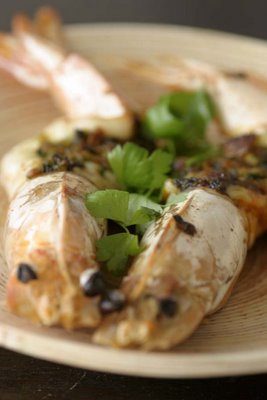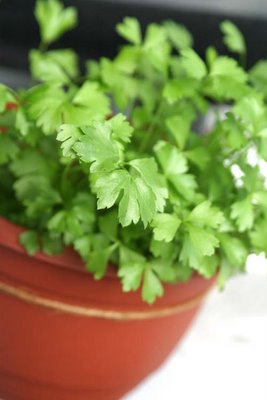
It's strange how the palate changes as we age. Perhaps Life teaches us that unless we try something firsthand, we'll never really know if we like it or not. Before I met C six years ago, I would never go near a raw oyster or century egg. But thanks to his coaxing, I now cannot imagine how I ever passed on those two wonderful foods. It's the same thing with coriander. Until recently, I would painstakingly pick out every last leaf or stem in the dishes that greeted me on any given table. And being Asian, you can imagine how many coriander-infused dishes have crossed my dinner plates' path. Thankfully, things have changed. In the last two years, I've begun to appreciate the robustness that coriander bestows upon the dishes it anoints. For the longest time, I never realised that coriander root is the base for countless Asian dishes including my favourite laksa. And while I still tend to hesitate before eating whole coriander leaves, I certainly won't pick them out of the dish either. I've also developled a taste for pureed coriander, like in coriander pesto for example. One of my favourite dishes these days is Grilled Coriander and Chilli Prawns, which I devour with abandon, cholesterol level be damned.
To make those, simply pile a super large handful of coriander leaves and stems in a food processor with two or three fresh red or green chillies, a thumb-sized knob of fresh ginger, two garlic cloves and a pinch of salt. Blitz it and mix in a spoonful or two of softened, unsalted butter. Then get the biggest, baddest prawns you can find, peel the shell off its middle and make a cut down the middle (but not all the way through). Now pull of the flesh sideways so that it gapes and then whack of teaspoonful of the coriander mix in. Now grill for about 10 minutes or until the prawns are cooked. Yum scrum; don't count on stopping at one!

I am also pleased to report that my once fledgling coriander plant is now a flourishing adult, giving me yet more excuses to experiment with this wonderful herb that Asians have used for centuries.
To end off, here are a few coriander facts that I recently discovered:
Coriander goes by many names: cilantro, Chinese parsley, or its scientific term, Coriandum Sativum. According to Rhonda Parkinson, the word coriander is used to describe the entire plant: leaves, stems, seeds, and all. However, when speaking of coriander, most people are really referring to the spice produced from the seeds of the plant. The leaves of the plant are commonly called cilantro, which is derived from the Spanish word for coriander.
Indeed, every day we learn something new. Hope you all had a good weekend and thanks Kalyn for hosting Herb Blogging Weekend once again!
No comments:
Post a Comment